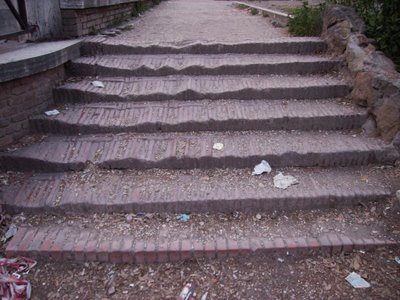024 gradini curvi

These brick steps are located at the south end of the Roman Forum.
My task of late at work has been to research trends across the world in structural engineering, and gather information about what the current state of practice is in each country. I am also trying to identify all pertinent international organizations and experts in the field. All of this research will go towards creating a survey to be sent out to the 180 ICCROM Member nations, and then to a course outline with some degree of universality to it.
The difficulty so far as been narrowing the search, since:
the structural engineering of the built heritage is a subset of
structural engineering of existing buildings is a subset of
structural engineering is a subset of
civil engineering is a subset of
engineering.
For example, I have found numerous plain-vanilla "engineering" international organizations but very few that specialize in just one branch, such as civil engineering. My best bets so far are the ICOMOS structural restoration charter and the Existing Structures Commission of the IABSE (International Association for Bridge and Structural Engineering).
I have discovered some interesting information about roles of architects vs. structural engineers around the world. In some cultures, generally in the Far East (Korea, Sri Lanka are 2 case studies), architects have all of the technical engineering of a structural engineer in the US. However, the US/UK model is to have structural engineering as a separate profession. I found an interesting document (interesting to me) explaining the differences in the US between an architectural and engineering education, internships, and professional registration.
Bonus: my bio is now posted in French.

